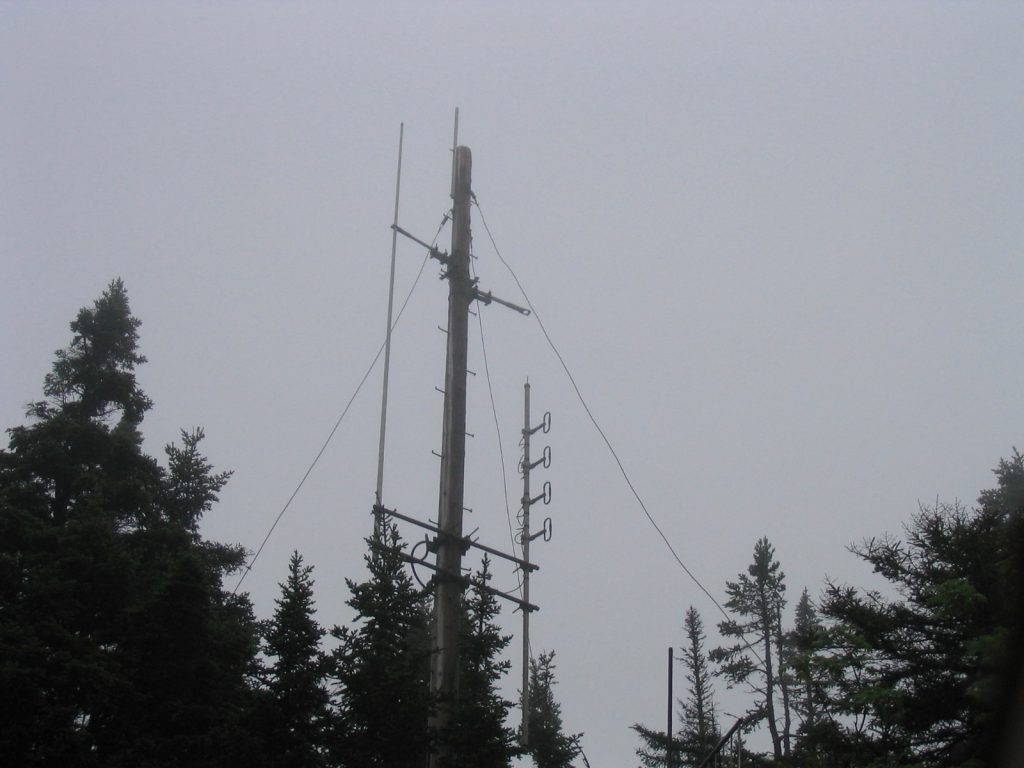Burke Mountain is located in the northeast corner of Vermont in the town of Burke. The mountain is located about six miles northeast of Lyndonville Vermont. At an elevation of 3289 feet it is one of he highest points in the immediate area. The mountain summit as well as the lands that surrounds the mountain are owned by the State of Vermont. The area is known as Darling State Park. The top of the mountain is easily accessed via a paved toll road. During the winter months a ski area is in operation here. The summit was used early on by the Department of Forests and Parks as a forest fire lookout station. When two-way radio communications first came to be used by various State Agencies in the late 1940s, Burke Mountain became an essential communications site providing radio coverage to areas in the Northeast Kingdom.
Today this site remains a valuable communications site and is utilized by many as a vantage point for various communications systems, such as two-way radio, paging transmitters, an FM station, a TV station, and cellular telephone equipment.
In the fall of 2003 NFMRA decided to investigate the possibility of installing a UHF repeater at this site. The use of this site would be a welcome addition to NFMRA’s endeavor to provide state wide UHF coverage. After a year of negotiation with various State entities, a lease to use the site was granted in January 2005.
The Amateur equipment here is configured much the same as at the club’s other locations utilizing two independent stations, a main repeater and the linking equipment. The repeater will provide local coverage to the surrounding area. Initially, the station was linked into W1IMD’s system on Mount Washington (in New Hampshire) and also to Killington Peak. Because the path to Killington is about 75 miles, linking is done via a microwave link. At this point in time, two Motorola MSF-5000 stations were installed at the site. The NFMRA repeater went into operation on 14 June, 2005 when the installation of a new antenna was completed. The link to Mount Washington was abandoned at about this time.
The frequencies used on the main repeater are 449.125 Mhz to receive and 444.125 MHz to transmit. A CTCSS tone of 110.9 Hz is also required to activate the repeater for local coverage and to gain access to Killington.

The picture to the right shows the original staton configuration. Seen are two cabinets stacked together that contain the two Motorola MSF-5000 stations used at the site. The top cabinet houses the linking equipment and the main repeater is located in the bottom cabinet. The RF tray is missing from the top unit and the PA is missing from the bottom unit when this photo was taken. A Pacific Research controller is used to provide all the required PTT, repeater audio, and switching configurations between all the stations. The controller can be seen in the right center of the bottom cabinet. The link station was removed when the Mount Washington link was abandoned.

After a change in system configuration, only one cabinet (the bottom one) remains at this site.

In the picture above, located on the right side of the wooden telephone pole you can see the 4-bay dipole antenna used by the repeater station. This antenna, made by Telewave Inc., is arranged to provide a cardioid pattern which favors a north/south direction. About 100 feet of 7/8 inch heliax connects the repeater to the antenna.

This view was taken from the summit of the mountain looking toward the southwest. This picture was taken on a day that was quite overcast but it gives an idea of the fantastic view from this site.